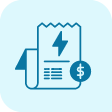Empower Your Business
with the Right Funding
Discover the perfect funding solution for your business by comparing multiple loan options at once. With our platform, you can confidently choose the best fit for your needs and take your business to new heights. Let us help you find the funding you need to fuel your success.


Discover the Right Funding Solution
Our process is simple and straightforward. In less than 3 minutes, you can answer some basic questions with no impact to your credit score and compare multiple loan offers. With our platform, you are in control and can confidently choose the best funding solution for your needs.
Never settle for less – our new search engine gives you the answers you want! We've taken Microsoft Bing's rich results to a whole new level with artificial intelligence.
What We Do
At our company, we use advanced proprietary technology to quickly and efficiently review your business information. This allows us to match you with the most suitable lending partners from our vast network of handpicked professionals. Our goal is to help you secure the funding you need to grow and succeed. We understand that loan standards are constantly changing, and we stay on top of these changes to ensure that we are always able to deliver the right lenders at the right time. With our expertise and commitment to your success, you can trust us to help you navigate the complex world of business financing.
There are a variety of loan types available in the market, each with its own unique features and benefits. As you explore your options, you may come across several different types of loans, including personal loans, business loans, mortgages, auto loans, and more. It’s important to carefully consider your needs and financial situation when choosing a loan type that is right for you

Short Term Loan
A short-term loan is a type of loan that is obtained to support a temporary personal or business capital need³. It is a type of credit that involves repaying the principal amount with interest by a given due date, which is usually within a year from getting the loan³. Short-term loans are enormously popular because short-term financing can offer borrowers fast and flexible access to the funds they need. For instance, if you’re facing a fluctuation in earnings, medical issues or an emergency home repair, this type of loan could be the best option for you.
Short Term Loan
A short-term loan is a type of loan that is obtained to support a temporary personal or business capital need³. It is a type of credit that involves repaying the principal amount with interest by a given due date, which is usually within a year from getting the loan³. Short-term loans are enormously popular because short-term financing can offer borrowers fast and flexible access to the funds they need². For instance, if you’re facing a fluctuation in earnings, medical issues or an emergency home repair, this type of loan could be the best option for you².
Short-term loans are defined as borrowings undertaken for a short period to meet immediate monetary requirements⁵. For example, companies often borrow short-term loans using bank overdrafts to arrange money for working capital requirements⁵. The loan tenure varies based on the debt type⁵.
Short-term loans are loans with little to no collateral that are to be repaid in a year or less, sometimes weeks or months⁴. Most require proof of employment with a certain monthly salary, a bank account and a driver’s license or another form of ID⁴.
It’s important to keep in mind that some lenders may offer short-term loans with relatively high interest rates — but the annual percentage rates, or APRs, are still lower than the typical payday loan¹. Before applying for a short-term loan, it’s important to carefully consider things like interest rates, fees and loan amounts available¹.
In conclusion, short-term loans can be a useful tool for individuals and businesses in need of quick access to funds. However, it’s important to carefully consider all available options and understand the terms and conditions before applying for a short-term loan.

Line Of Credit
A revolving loan that provides a fixed amount of capital and that can be accessed when needed. Unlike a traditional term loan, all or part of a line of credit can be accessed on demand up to a fixed limit. The customer pays interest only on the outstanding principal amount in use
Line Of Credit
- A line of credit (LOC) is a preset borrowing limit that can be tapped into at any time. The borrower can take money out as needed until the limit is reached. As money is repaid, it can be borrowed again in the case of an open line of credit1. An LOC is an arrangement between a financial institution—usually a bank—and a customer that establishes the maximum loan amount that the customer can borrow. The borrower can access funds from the LOC at any time as long as they do not exceed the maximum amount (or credit limit) set in the agreement1. A line of credit can be secured (by collateral) or unsecured, with unsecured LOCs typically subject to higher interest rates1. The LOC has built-in flexibility, which is its main advantage. Borrowers can request a certain amount, but they do not have to use it all. Rather, they can tailor their spending from the LOC to their needs and owe interest only on the amount that they draw, not on the entire credit line. In addition, borrowers can adjust their repayment amounts as needed based on their budget or cash flow.
- Or you can get a check and use it for what you need to use it for and pay it either on daily or weekly or monthly basis.

Long Term Loan
A long-term loan is a type of loan that is obtained to support a long-term personal or business capital need. It is a type of credit that involves repaying the principal amount with interest by a given due date, which is usually more than a year from getting the loan. Long-term loans are defined as borrowings undertaken for a longer period to meet long-term monetary requirements.
Long Term Loan
A long-term loan is a type of loan that is obtained to support a long-term personal or business capital need⁶. It is a type of credit that involves repaying the principal amount with interest by a given due date, which is usually more than a year from getting the loan⁶. Long-term loans are defined as borrowings undertaken for a longer period to meet long-term monetary requirements⁵.
Long-term loans can be secured (by collateral) or unsecured, with unsecured loans typically subject to higher interest rates⁶. A secured long-term loan is a way of borrowing that gives you a large sum of money upfront and is secured against a valuable asset, such as your house⁶. An unsecured long-term loan is also possible to borrow over a longer time frame without securing it against an asset⁶.
Many types of lenders offer long-term personal loans, including banks, credit unions, and online lenders⁵. Banks like Discover, Wells Fargo, and U.S. Bank offer personal loans with terms of up to seven years⁵. Credit unions offer personal loans with terms of up to seven years⁵. Digital lenders like offer loan terms of up to seven or even 12 years, depending on the loan amount⁵.
In conclusion, long-term loans can be a useful tool for individuals and businesses in need of access to funds for longer periods. However, it’s important to carefully consider all available options and understand the terms and conditions before applying for a long-term loan.

Merchant Cash Advance
A Merchant Cash Advance (MCA) is an alternative type of business financing that advances a lump-sum payment based on future credit or debit card sales¹. This type of financing is typically for businesses that get revenue through credit card sales¹. With an MCA, a company gives you an upfront sum of cash that you repay using a percentage of your debit and credit card sales, plus a fee.
Merchant Cash Advance
A Merchant Cash Advance (MCA) is an alternative type of business financing that advances a lump-sum payment based on future credit or debit card sales¹. This type of financing is typically for businesses that get revenue through credit card sales¹. With an MCA, a company gives you an upfront sum of cash that you repay using a percentage of your debit and credit card sales, plus a fee².
An MCA is not a traditional small-business loan. Instead, the provider is purchasing your future sales, and you’ll use those sales to repay the funds — plus fees². Eligibility guidelines for MCAs are loose, making it easy for businesses with bad credit to get approved¹.
Merchant cash advance repayments can be structured in two ways:
- Percentage of debit/credit card sales: This is the traditional way an MCA is structured, in which a merchant cash advance provider automatically deducts a daily (or weekly) percentage of your debit and credit card sales until the advance is repaid in full².
- Fixed withdrawals from a bank account: Merchant cash advance companies can also withdraw funds directly from your business bank account. In this case, fixed repayments are made daily or weekly from your account regardless of how much you earn in sales, and the fixed repayment amount is determined based on an estimate of your monthly revenue².
In conclusion, a Merchant Cash Advance is an alternative type of business financing that provides businesses with quick access to capital based on their future credit or debit card sales. However, it’s important to note that this type of financing can be expensive and may not be the best option for all businesses. It’s always a good idea to carefully consider all available options before making a decision.
If you’re a business owner who has declared bankruptcy, you may be wondering if it’s possible to get a business loan. The good news is that it is possible, but it definitely takes some extra work if you want to go in traditional way.
Bankruptcy is a legal process that allows small-business owners to eliminate their debts or set up a repayment plan when they’re overwhelmed by their finances. However, bankruptcy remains on a business credit report for up to ten years and typically causes a business credit score to drop dramatically. This sudden and significant drop makes it difficult to get approved for small-business loans and unsecured credit cards.
So, how can you obtain a business loan after bankruptcy? Here are some steps to increase your chances of getting approved in traditional way:
Traditional way:
- Wait for bankruptcy to be discharged: It’s best to wait for your bankruptcy case to be discharged before shopping around for a business loan. Check your credit report to make sure the discharge is official—after this point, you’ll have a better chance of qualifying for a loan.
- Build a rock-solid business plan: A past bankruptcy will trigger extra scrutiny of your business loan application. Anticipate and address potential concerns with a business plan that lays out your market research, sales plan, current financial statements, and future financial projections.
- Write a bankruptcy statement: Directly address the elephant on your credit report with a brief addendum to your business plan that explains what led to the bankruptcy (and what has changed since then).
- Enlist a co-signer: A business partner or loved one with a clean credit history can co-sign your business loan, greatly improving your odds of approval post-bankruptcy.
In conclusion, getting a business loan after bankruptcy is possible, but it requires some extra effort. By following the steps outlined above, you can increase your chances of getting approved and pave the way for future growth and success.
New way:
You could apply with us and look for some lenders for you that are willing to do it even with your bankruptcy without waiting for so long and at the same try we try our best to help you clean up your past.
Once you have been approved for one of our lender’s plans, it typically takes between 3 to 5 business days for the funds to be deposited into your account. This time frame allows for the necessary processing and verification procedures to be completed, ensuring that the funds are transferred securely and accurately. We understand that time is of the essence when it comes to business financing, and we strive to provide our clients with quick and efficient access to the funds they need. Rest assured that we will do everything in our power to expedite the process and get you the funds you need as soon as possible.
- A line of credit (LOC) is a preset borrowing limit that can be tapped into at any time. The borrower can take money out as needed until the limit is reached. As money is repaid, it can be borrowed again in the case of an open line of credit. An LOC is an arrangement between a financial institution—usually a bank—and a customer that establishes the maximum loan amount that the customer can borrow. The borrower can access funds from the LOC at any time as long as they do not exceed the maximum amount (or credit limit) set in the agreement. A line of credit can be secured (by collateral) or unsecured, with unsecured LOCs typically subject to higher interest rates. The LOC has built-in flexibility, which is its main advantage. Borrowers can request a certain amount, but they do not have to use it all. Rather, they can tailor their spending from the LOC to their needs and owe interest only on the amount that they draw, not on the entire credit line. In addition, borrowers can adjust their repayment amounts as needed based on their budget or cash flow.
- Or you can get a check and use it for what you need to use it for and pay it either on daily or weekly or monthly basis.
Collateral is an asset that a borrower pledges as security for a loan. In the event of a default, the lender can seize the collateral and sell it to recoup the loss. Collateral reduces the risk for lenders and can help borrowers qualify for a loan by lowering the risk to a lender. Loans secured by collateral are typically available at substantially lower interest rates than unsecured loans.
There are various types of loans that typically require collateral. For example, when a homebuyer obtains a mortgage, the home serves as the collateral for the loan. For a car loan, the vehicle is the collateral. A business that obtains financing from a bank may pledge valuable equipment or real estate owned by the business as collateral for the loan. Other personal assets, such as a savings or investment account, can be used to secure a collateralized personal loan.
In conclusion, collateral is an important aspect of many types of loans. It provides security for lenders and can help borrowers qualify for loans at lower interest rates. By pledging an asset as collateral, borrowers can demonstrate their ability to repay the loan and minimize the risk for lenders.
Frequently
Asked Duestion

Discover the Ideal Funding Solution
for Your Business
Find the perfect loan solution for your business right now with our platform. We make it easy to compare multiple options and choose the best fit for your needs. Let us help you fuel your success and take your business to new heights.
